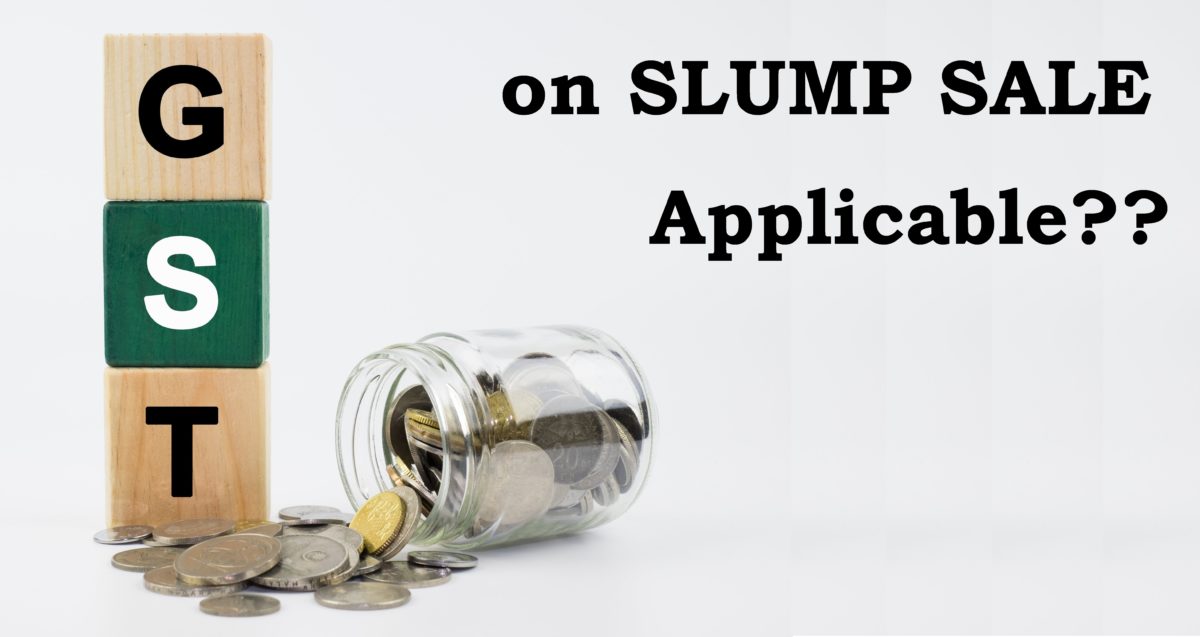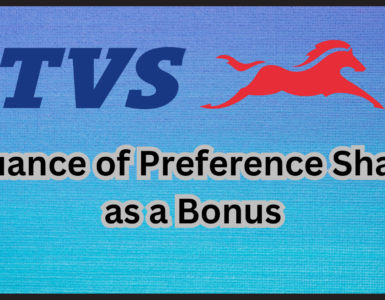The taxation regime for “Slump Sale” deals in India has always been a matter of differential judicial views and even before the advent of latest overhauled indirect tax structure, the position was scarcely settled when it comes to Slump Sale taxation rule. This Article, analyses and attempts to bring out the current position of indirect taxation on Slump Sales and the deviation from the hitherto existing position.
Slump Sale: A cursory glance on the concept
In M&A transactions, “Slump Sales” are considered to be one of the most preferred ways of carrying out a deal due to various tax and stamp duty incentives associated with it. In terms of Section 50 B read with Section 2(42C) of the Income Tax Act, 1961, Slump Sale means a transaction which satisfies the following pre-requisites: (a) sale of an undertaking; (b) lump sum consideration; and (c) no separate values being assigned to individual assets and liabilities.
Consequently, the tax treatment and benefits annexed to Slump Sales are directly linked to satisfaction of these conditions. It is to be noted that the Legislature has chosen to include only transfer as a result of “sale” within the ambit of slump sale and has expressly not covered transfers by any other means.
Tax regime for Slump Sale prior to enforcement of GST
Under the erstwhile tax regime, transfer of a business as a going concern including transfer of whole unit or a business division was not subject to Sales Tax or Value Added Tax (VAT). The rationale behind this was that the sale of whole business cannot be equated to sale of moveable goods which was subject to sales tax only. However, the judicial interpretation and view on applicability of VAT on Slump Sales, was not clear.
While until recently, the courts were, on a multiple occasions, consistently taking the position that in the event any part of the undertaking or the assets are retained by the transferor entity, then such transaction will not be construed as a slump sale or sale of the business as a going concern and accordingly the VAT laws will be applicable to such transactions. As a result of the above, it became implicit that any sort of cherry picking would be inconsistent with the concept of “slump sale” as defined under Income Tax Act, 1961 and hence not permissible.
However, the judicial view recently saw a notable deviation when various forums deviated from the aforesaid understanding and stand on the scope of Slump Sale and thereby approach for determining the applicability of VAT on such deals. For instance, Delhi High Court in the case of Triune Projects Pvt. Ltd vs. DCIT, upheld the position that a transaction does not cease to be a slump sale merely due the seller retaining certain defunct or unwanted assets of the undertaking. The crux of the judgment is that, for a sale to be termed as ‘slump sale’ it is not necessary to transfer all assets and liabilities, however, the core elements of the business must be transferred for a lump sum price and the Transferee must be able to continue running the business without the assets which have not been transferred. The point to be noted here is that, Delhi High Court herein has specifically examined the issue from the perspective of Section 50 B of the Income Tax Act and although it may be quite reasonable to extend the same ratio while determining VAT and other tax liabilities, but the same is not completely unambiguous and clarity on such specific aspects by the authorities would be required before firming any view on the same. The similar position was taken by Kolkata High Court.
As far as Sales Tax was concerned, the position was majorly certain that there is no Sales Tax payable on the transfer of a business as a going concern, including the transfer of a whole unit or division of any business. This is based on the rationale that the sale of an entire business cannot be equated with the sale of movable goods, i.e. sale of “business” was not considered to be “goods” under sales tax laws.
Introduction to GST: Still a Mixed Bag?
India has recently switched to GST from the complex and multilayered tax regime that was prevalent till now. The introduction of GST has certainly overhauled the entire indirect tax mechanism of the Nation and undoubtedly has become one of the most talked about and debated issues of recent times. While the lawmakers are certain on the long-term benefits of the GST structure, the nascent and juvenile complexities in the structure and implementation of GST cannot be overruled.
In the words of PM, Shri Narendra Modi: “With GST, we intend to bring in uniformity in taxes. The message is clear that the ‘consumer is the king’. If we utilize man, machine, material, money and minute (time), we will not need any other policy for economic advancement.” Going by the idea and intent behind GST, it has been envisioned to make the Indian tax regime more efficient and attractive. GST is expected to create a wider tax base and diminish the multiple tax regimes and irrational distribution of the taxes amongst the States and Center.
While the implication of the new tax regime continues to be analyzed the community, however, there are certain aspects of GST which will certainly have a direct impact on the industry including mergers and acquisition transactions.
Tax regime for Slump Sale post enforcement of GST
The Central Goods and Services Tax Act, 2017 (CGST Act) does not clearly stipulate the law vis-à-vis transfer of business as a going concern or slump sale. Thus, there is no settled position or clarity whether the transactions involving slump sales would be taxable under the new CGST Act or not. The market players are also divided in their views on the same.
Considering the budding stage of implementation of this regime, unlike VAT, there is no judicial pronouncement on the issue. Therefore, the provisions of the CGST Act need to be analyzed in order to reach a fairly inferable view on the applicability of GST on Sump Sales.
Under the CGST Act, in terms of combined reading of the charging Section 9 (Levy and Collection) and Section 12 (Time of Supply of Goods), CGST shall be applicable on supplies of all intra state goods or services or both subject to given exemptions and the same shall get triggered at the time of supply.
WHEREAS, the scope of “Supply” under Section 7(1) of the CGST Act is wider than the definition of Slump Sale under Section 2(42C) of the Income Tax Act, 1961, as it includes any sale, transfer, disposal, lease/license or exchange of goods or services and hence sufficient to include any sale or transfer of goods within its ambit. However, the term “Goods” has been defined under Section 2(52) to mean any movable property other than monies and securities. Consequently, and basis the judicial views under the previous indirect tax regime, one approach that could be argued would be to infer that GST may not be applicable on Slump Sales considering “business as a going concern” to be outside the scope of “goods”.Having said this, GST shall be applicable on any itemized sale of assets considering the fact that individual assets shall be covered under the scope of “goods” and their value can be feasibly determined.
Further, the CGST Act provides for availability of credit (as mentioned herein below) in the case of itemized sales as well. Another relevant aspect of GST is the process of availing input tax credits. The rule at a glance appears to be direct and simple- you pay tax on input goods or services and you avail benefit on output tax.
However, considering the “Dual GST Model” adopted by India- where different states will have their own State GST regime and rules, in case the business units of the same company or the transferred business unit and the transferee company are located in different states, then the benefit of input tax credit may not be available to the output taxes being paid by the transferee unit. To put it differently, in the event of inter-state transaction involving slump sale, the input tax credit of the entity which as a result of such slump sale, cease to have any operations, shall remain untouched as such entity would not be able to adjust the input tax credit against the output tax credit. Accordingly, even if one takes the view that GST is not applicable on Slump Sales, the overall effect on tax liability and benefits in an inter-state deals need to be analyzed and the transfer mechanism should be carefully structured to avoid missing out on tax benefits and exemptions under the dual GST regime.
ARA LAW View
Although the GST regime has been welcomed by the community being one of the biggest tax reforms in India, there are still certain unchartered spaces that the Government needs to carefully discern. On a preliminary analysis of the CGST Act in the light of judicial interpretations under the erstwhile legislations, it seems that the GST may not be applicable on business transfer as a going concern (on slump sale basis). Thereby, the position on applicability of indirect taxation (earlier VAT and not GST) in all probabilities will remain unchanged.
However, in the absence of any direct charging or exemption of GST on slump sales like in the GST laws of other jurisdictions Australia and New Zealand, the possibility of differential views and interpretation cannot be completed overruled and only the time will determine whether the judiciary will continue to firmly hold its previous positions or will analyze the new provisions differently. Also considering ours is a “Dual GST” structure, it will be pertinent to wait and watch if the state GST laws come out with any express or implied exemption (or charging!) of GST on slump sales or manner of availing input tax benefits. Having said this, the continued significance of GST on structuring of inter-state business transfers are undisputable.
This article was first published in the ARA Law Monthly Newsletter in August 2017.




